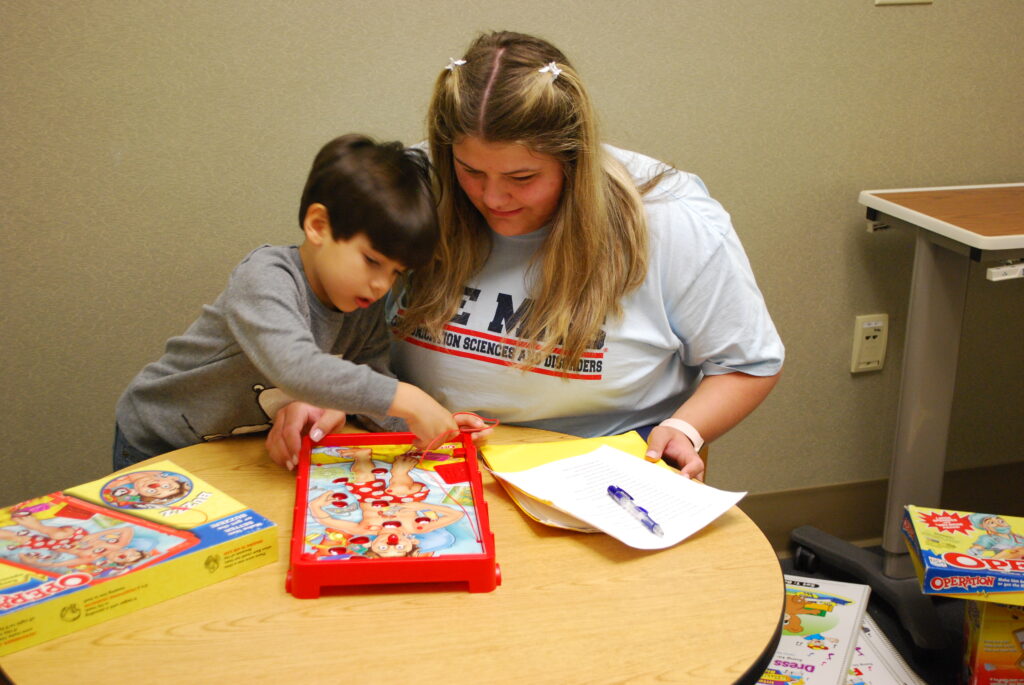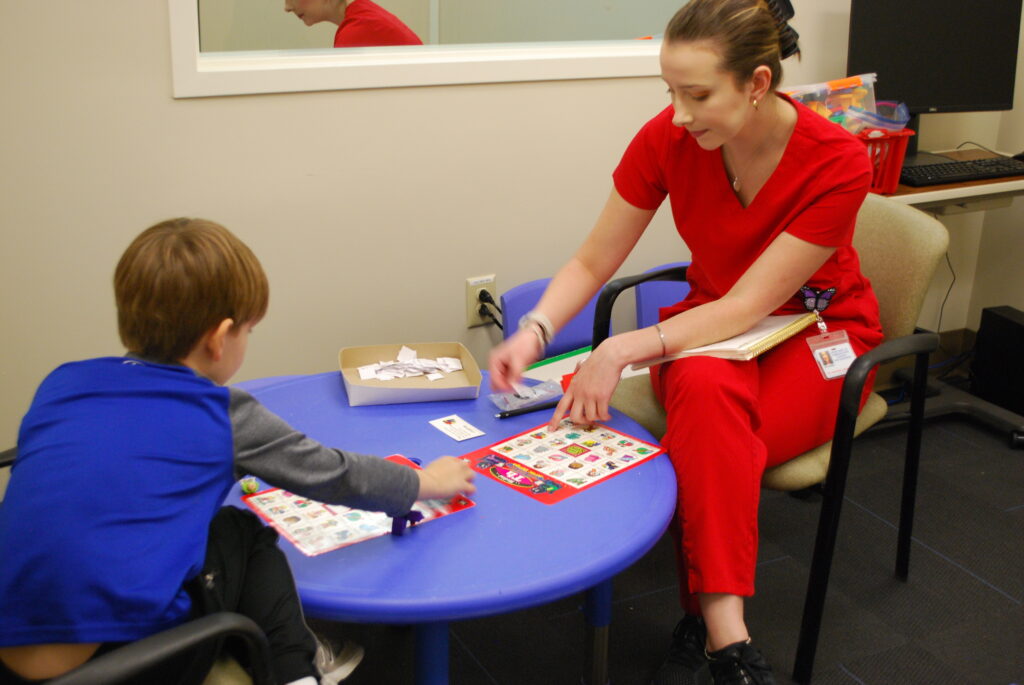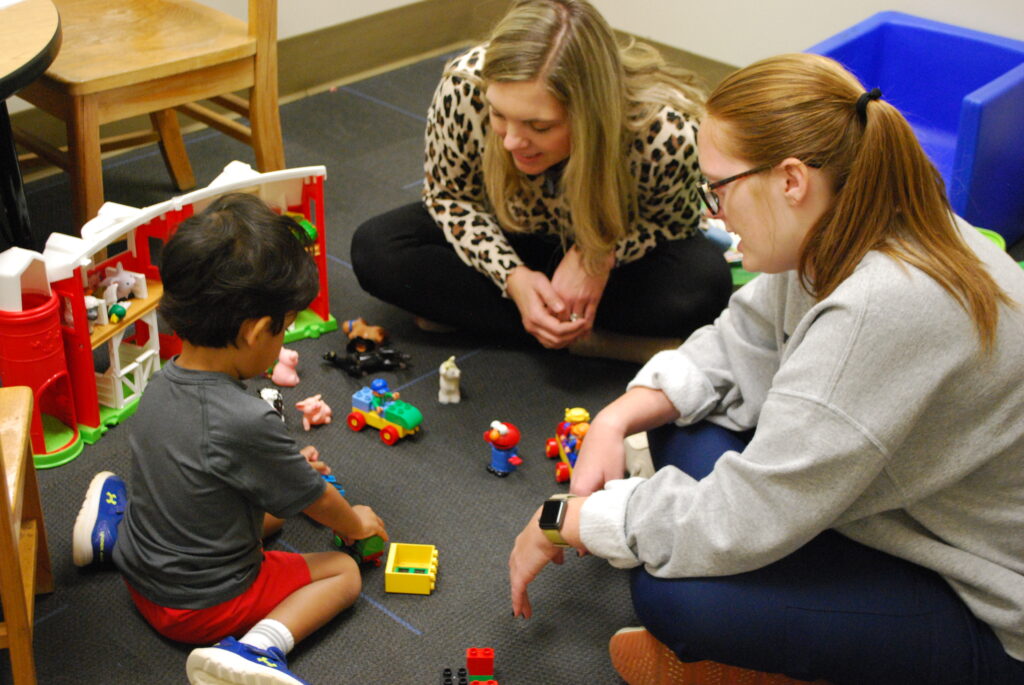HILL Language and Literacy Program
Purpose
The HILL program at The University of Mississippi provides intensive language therapy to young children with moderate to severe language disorders. Our purpose is:
- To maximize the language learning capabilities of young children.
- HILL Class: Children ages 3-5 with receptive and expressive language delay, hearing impairment, Down syndrome, autism spectrum disorder, and other etiologies
- Transition Class: Children ages 5-7 with autism spectrum disorder and other disabilities who need assistance transitioning into other programs (i.e. school, etc.)
- To provide clinical training for undergraduate and graduate students seeking careers as SLPs and audiologists.
- First year graduate clinicians are paired individually with a child for an entire semester and gain experience with assessment, therapy, supports, lesson planning, parent and teacher communication, and family education.
- To interface with the community to promote successful language interventions.
- To engage in research that will positively impact the field of speech-language pathology.
Mission
Our mission, along with the University of Mississippi, is to create, evaluate, share, and apply knowledge in a free, open, and inclusive environment of intellectual inquiry. We seek to serve the people of Mississippi and the world through a breadth of academic, research, and professional programs by:
- Providing an intensive program that focuses on the development of language and literacy in children with moderate to severe language disorders, hearing impairments, and intellectual or developmental disabilities; supporting these children as they transition to public schools or other academic settings.
- Providing exemplary clinical training for undergraduate and graduate students seeking careers as speech-language pathologists (SLPs), speech associates, and audiologists.
- Interfacing with the community, including local schools, teachers, staff, and administration to promote successful language interventions in academic and social contexts.
- Engaging in research that positively impacts the fields of early childhood education and communicative disorders and disseminating evidenced-based practice findings to the scientific community, clinical practitioners, community agencies, schools, and families.
Methods
- Early intensive intervention prepares the children for a school based setting with larger classrooms.
- Schedule consists of activities including circle time, book time, individual therapy, movement, snack, art, and centers.
- Emphasis is placed on a literacy-based curriculum with activities that coincide with the book theme.
- Play-based and traditional therapy as well as individual and group therapy are implemented.
- Spoken language, signs, and picture symbols are incorporated in the total communication classroom.
- Phonological awareness, sensory modulation, and behavioral supports are also provided.
- Routine one-on-one interactions provide a framework for success and carryover.




